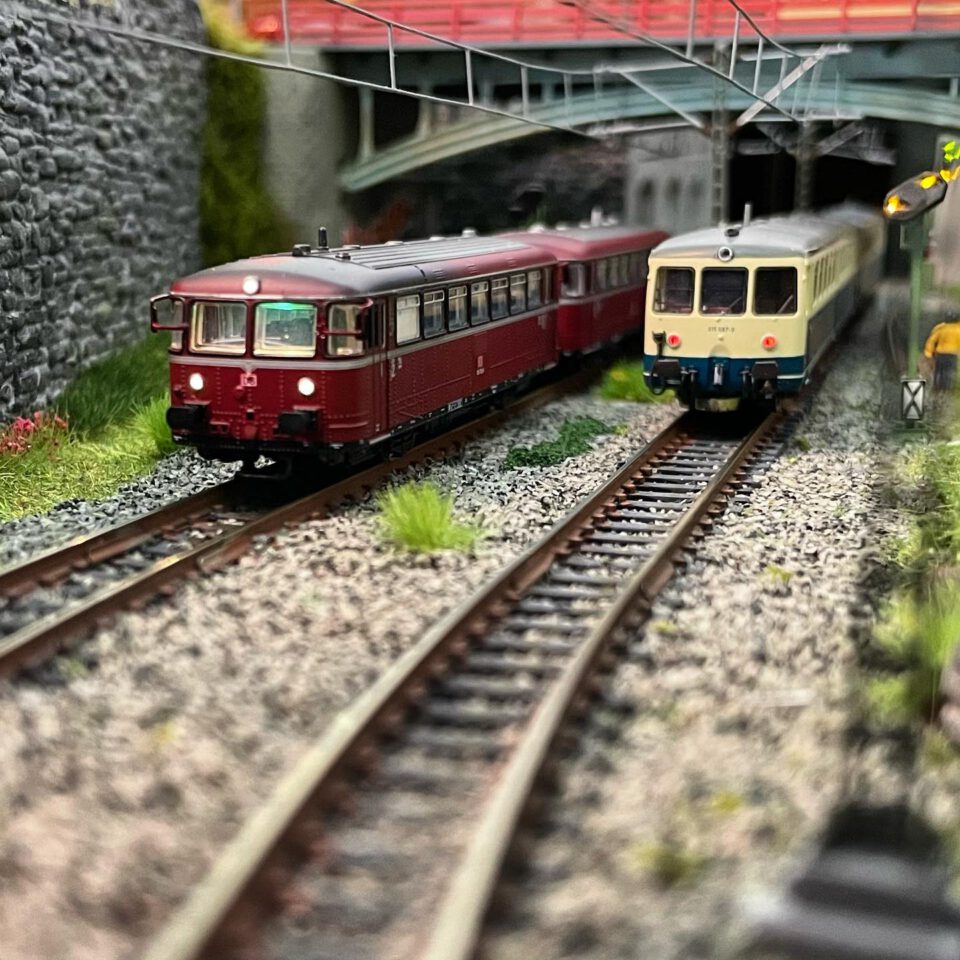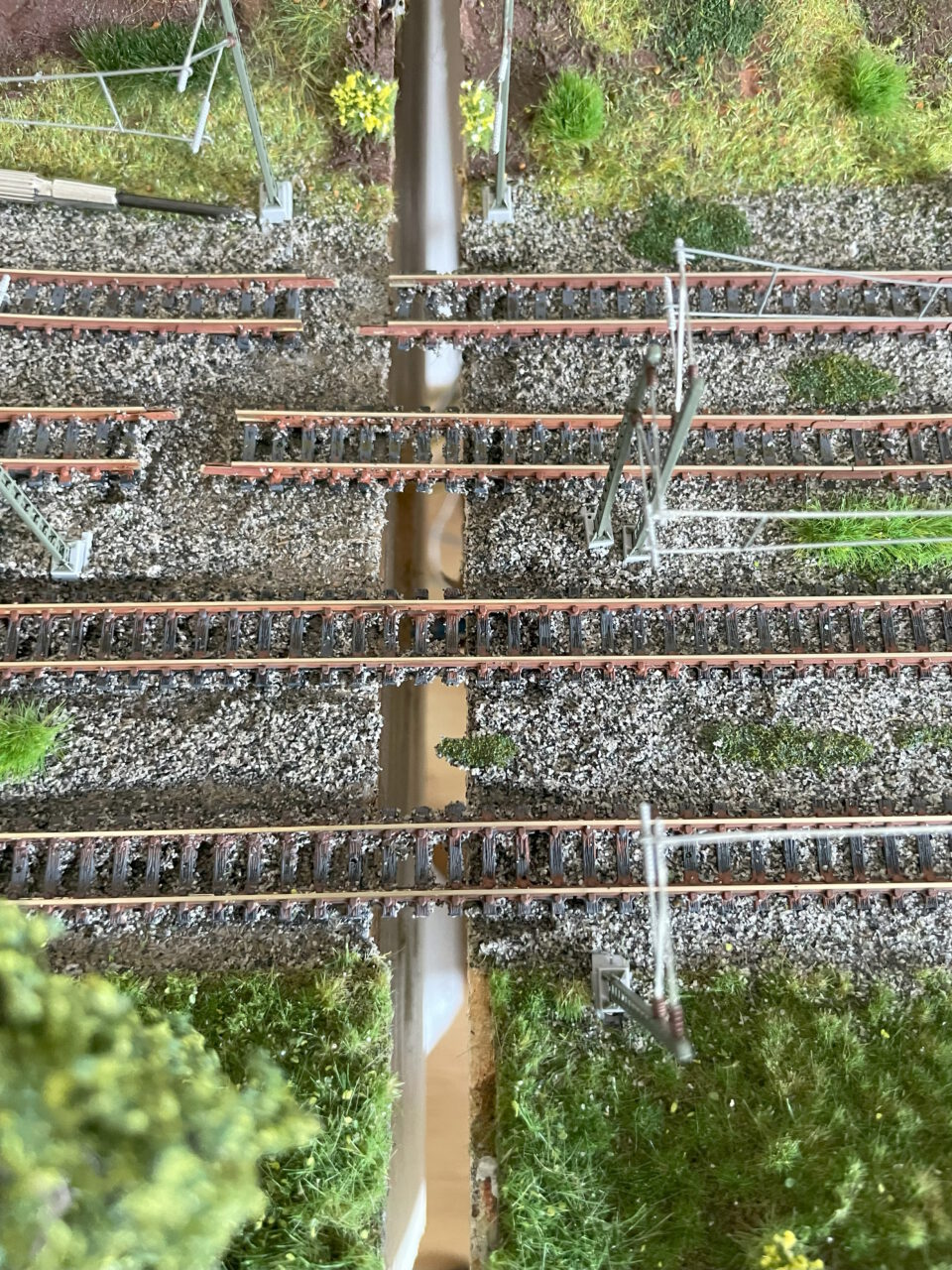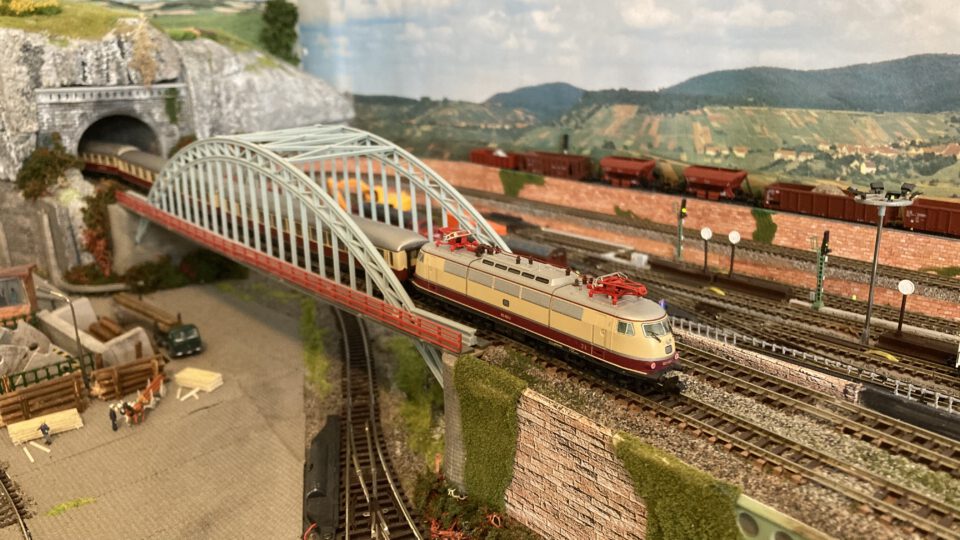Every model railroad comes to an end. Whether after a long parade track or a local railroad. Most hobbyists need to have the train turned around at the end to make a lap. Back to the beginning. How sharp this curve is, we express from a “radius. The higher, the wider the bend. Model Railroad Manufacturers call R1 the smallest radius. And you want to avoid those.
For virtually all major manufacturers, R1 requires about 40 cm total to “turn around. That is a semicircle formed by six rails. Then you are from the front to the back of your track. Kato is only brand that has wider radius at R1. Now Kato does deviate in more areas, just look at the sizing of especially their older models.
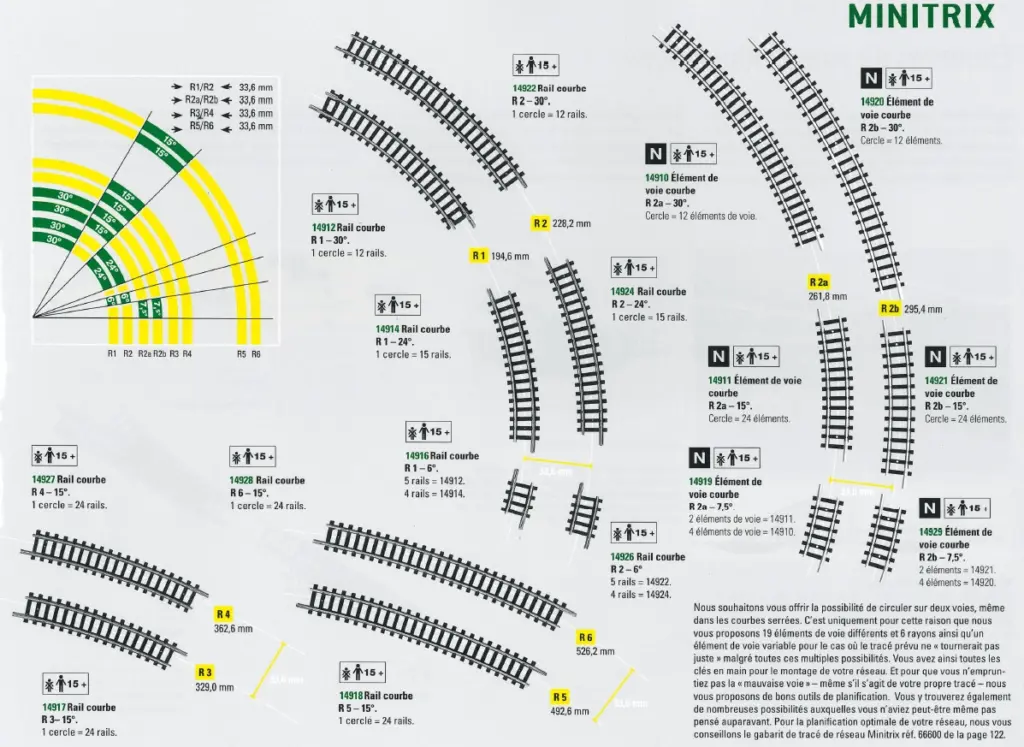
Since the common brands are similar, we take Minitrix as a starting point. Opposite R1 is R6 on the other side. Then the curves are very wide and 12 rails are needed for a half circle. Also, you are then more than a meter away. It is not only the “depth” that increases, but also the length. You need more space to turn your train around.
A small radius is incredibly practical, but has a number of dangers. If you are aware of this, you can make a turn in a smart way in a small area. You are always going to avoid the R1 radius in the process. Indeed, this inevitably leads to problems.
- More friction and traction
In general, the tighter the bend, the greater the friction. In model railroading, friction also means that more force is required and more forces act, including on the wagons. Also, the locomotive must have enough pulling power to drag the (long) train through it.
- Long trains fall over
As the length of the train increases, so does its weight. Imagine we have a long freight train that has to go through a tight curve. Then the locomotive takes the turn already, with the first wagons. So far, things are going well. Until the locomotive is halfway and most of it on the straight. The weight there then pulls on the front of the train. Result, the wagons directly behind the locomotive fall over.
- Trains do not fit
Increasingly, manufacturers are reporting that a model train cannot pass through an R1 radius. Especially with railcars, this can be the case. Therefore, the minimum radius is absolutely R2. In the 123 N Scale layout, we use these as well. And we never have any problems.
- Not making combinations
Do not make combinations of different radii. This is guaranteed to lead to hassle. The energy, no matter how small the locomotives, is suddenly interrupted by another radius in a gradual turn. That can lead to derailments.
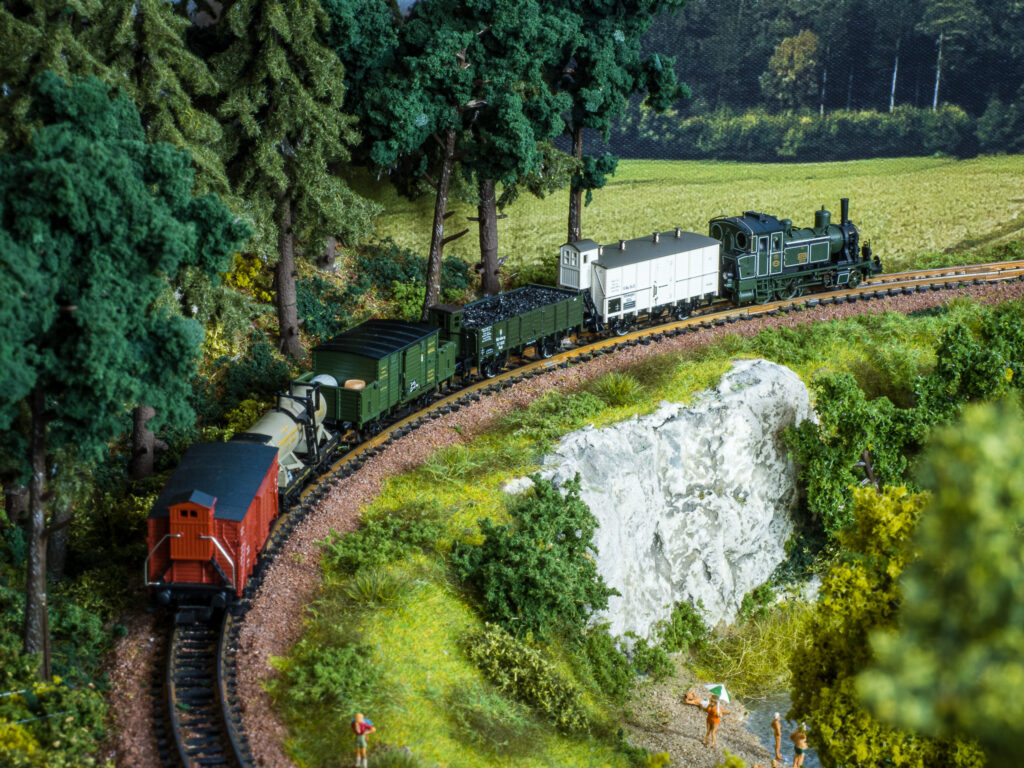
- It really doesn’t look good
We admit, perhaps not the greatest problem in the world, especially when the rails are in a tunnel. In sight, R1 bends are absolutely unethical. Indeed, this applies to all radii up to and including R4.
Depending on the visibility of the curves, an R2 radius can be applied. What is important is frequent and prolonged testing. With different types of trains; hauled, railcars and different weights.
This article is also available in:
![]() Nederlands
Nederlands
